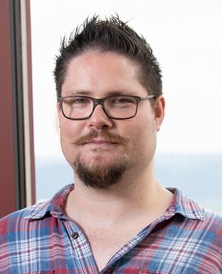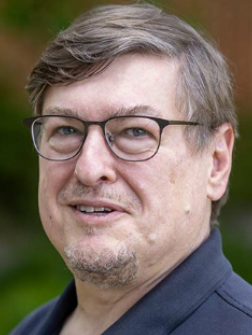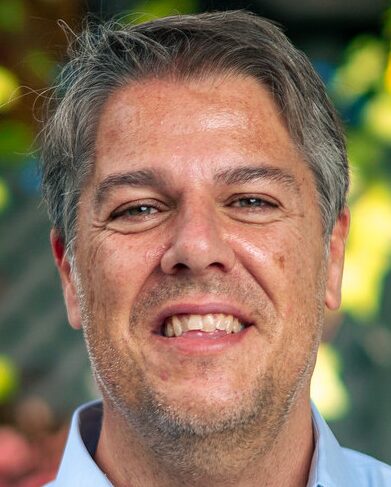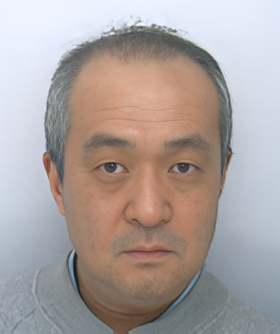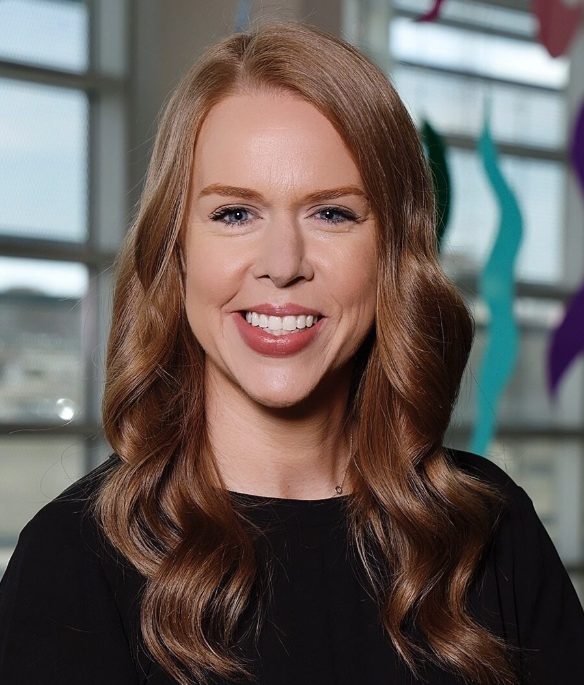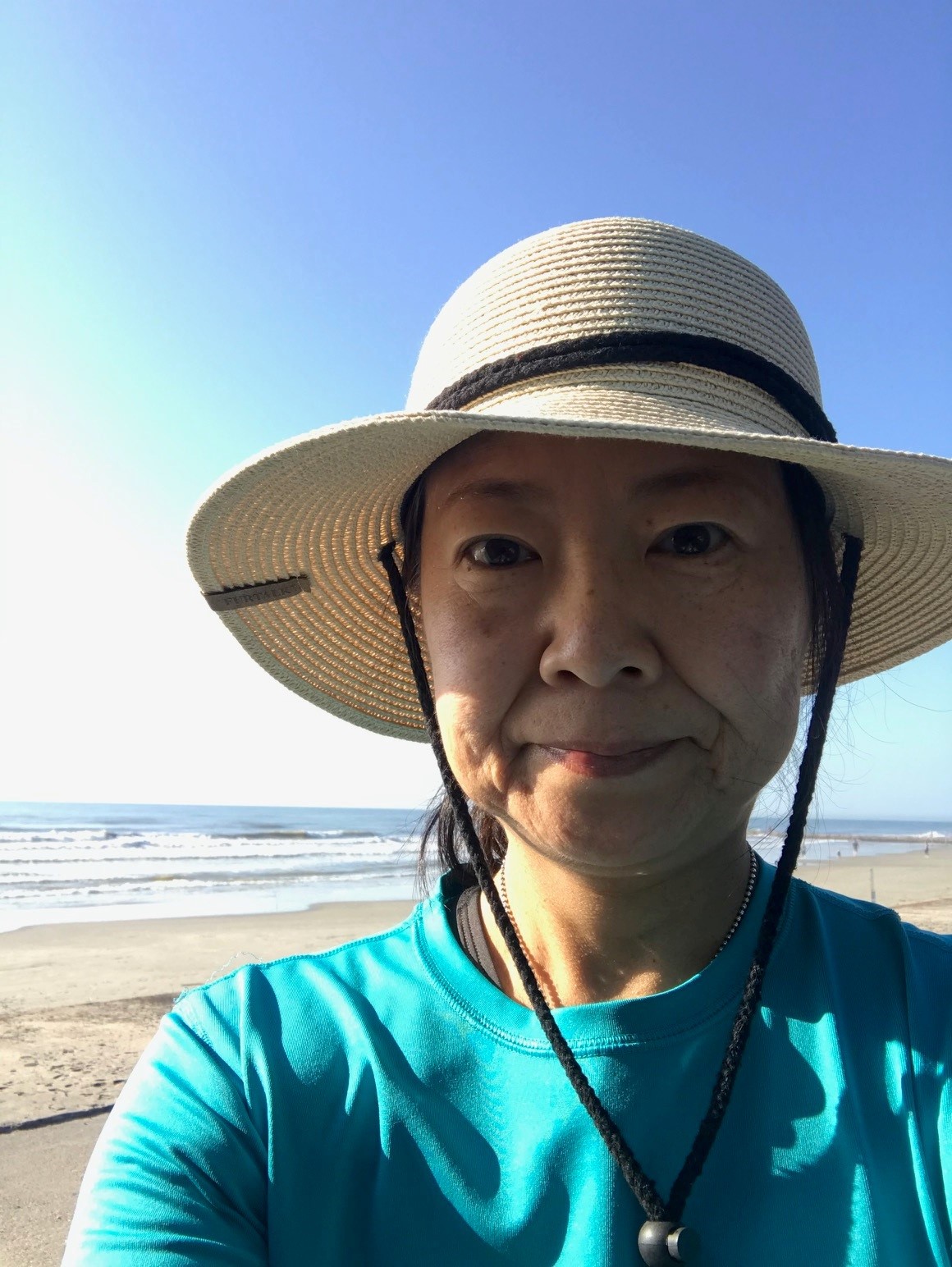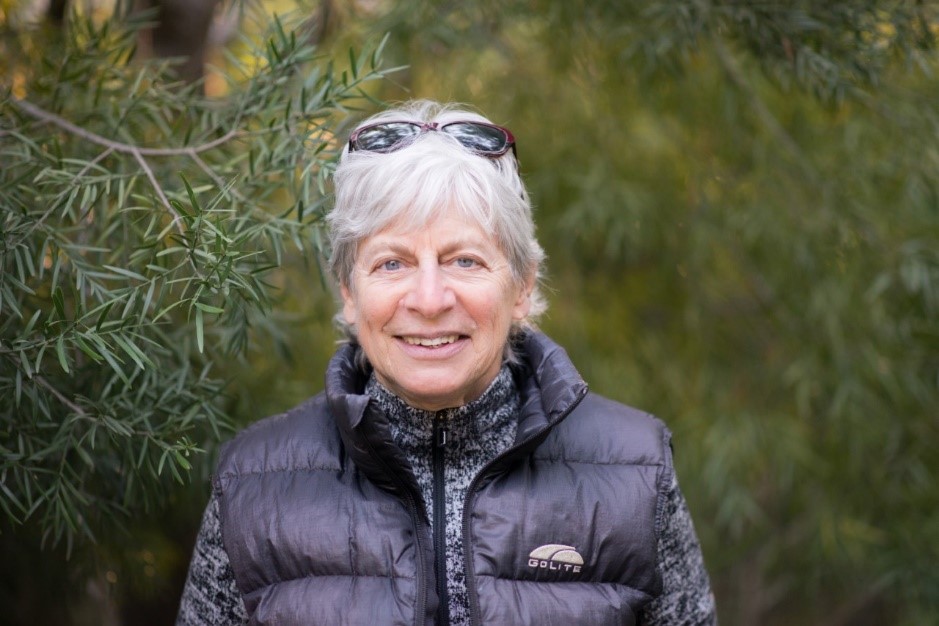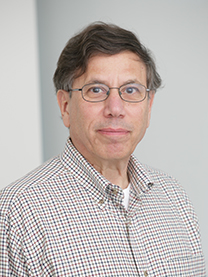aro seminar series
Dr. Paul B. Manis
Distinguished Research Professor
Department of Otolaryngology-Head and Neck Surgery
Cell Biology and Physiology
The University of North Carolina at Chapel Hill
Paul B. Manis, PhD
The Cochlear Nucleus: A Perspective
Paul B. Manis, Ph.D., is the Thomas J. Dark Distinguished Research Professor in the Department of Otolaryngology/Head and Neck Surgery at the University of North Carolina at Chapel Hill. He received his B.S. from the California Institute of Technology and his Ph.D. from the University of Florida in Neuroscience. After a postdoctoral experience at Vanderbilt in neurophysiology, he started in 1985 as an Assistant Professor at the Johns Hopkins University in Otolaryngology-Head and Neck Surgery, Neuroscience, and Biomedical Engineering. In 1999, he moved to his present position at the University of North Carolina. Dr. Manis has served on multiple NIH grant review committees, the NIDCD Council, the NIDCD Board of Scientific Counselors, and as chair of a Blue Ribbon Panel on the NIDCD Intramural program. He has been the principal investigator on multiple research and training grants from NIH. His primary research is on the cellular mechanisms of auditory information processing in the cochlear nucleus, including changes that occur with aging and hearing loss. This work has focused on synaptic transmission, circuits, and ion channel function, and the development of biophysically-based models representing neurons and circuits of the cochlear nucleus. He has also studied synaptic function and organization in the auditory and prefrontal cortex, including in mouse models of neurodevelopmental disorders.
Dr. Ross S. Williamson
Assistant Professor
Pittsburgh Hearing Research Center
Center for the Neural Basis of Cognition
Departments of Otolaryngology, Neurobiology, and Bioengineering
University of Pittsburgh
Ross S. Williamson, PhD
Brain-Wide Neural Circuits for Sensory-Guided Behavior
Ross grew up in Edinburgh where he studied Computer Science and Neuroinformatics as an undergraduate. In 2007, he moved south of the border, and in 2012 he received his PhD from University College London, where he worked at the Gatsby Computational Neuroscience Unit with Profs. Maneesh Sahani and Jennifer Linden. Ross then worked as a postdoctoral research fellow with Prof. Daniel Polley at the Eaton-Peabody Laboratories (Massachusetts Eye and Ear Infirmary) and Department of Otolaryngology (Harvard Medical School). In his spare time, Ross enjoys the outdoors, endurance sports, reading, and listening to music (especially Phish).
Dr. Lori L. Holt
The University of Texas at Austin
Department of Psychology and the Center for Perceptual Systems
Professor Lori L. Holt
Foraging for Regularities That Shape How We Listen
Lori L. Holt is a Professor of Psychology at the University of Texas at Austin. She earned a BS in Psychology from the University of Wisconsin-Madison in 1995 and a PhD in Cognitive Psychology from the same institution in 1999. She joined the faculty of Psychology at Carnegie Mellon University as faculty in 1999 where she was an active member, and ultimately co-director, of the Center for the Neural Basis of Cognition. She joined the faculty at UT-Austin as a Professor of Psychology and the Center for Perceptual Systems in Fall 2023.
Professor Holt is the recipient of the Troland Research Award from the National Academy of Science, a James McKeen Cattell Sabbatical Award, Fellow of the Acoustical Society and the Association for Psychological Science
Professor Holt studies the cognitive and neural basis of listening, especially as it relates to speech. She has been particularly interested in the role of learning and attention in shaping how we communicate and listen.
Dr. Jonathan Z. Simon
Professor, Department of Biology and Department of Electrical & Computer Engineering,
University of Maryland, College Park
Jonathan Z. Simon, PhD
Neural Representations of Same-Species Vocalizations in a Human Primate Model
Jonathan Simon’s expertise is in applied and theoretical neuroscience, with an emphasis on auditory neuroscience. His main research focuses on neural processing in the brain's auditory system, from specialized processing found only in humans (e.g., speech processing) to generalized processing found in most mammals, including auditory attention and sound localization. Another of his research areas is the investigation of the effects of aging on auditory processing, especially with respect to understanding speech in noise.
He earned his bachelors in physics from Princeton University, his doctorate in physics from the University of California, Santa Barbara, and did postdoctoral research in theoretical general relativity (University of Wisconsin-Milwaukee, and University of Maryland-College Park) before embracing the field of neuroscience. He joined the University of Maryland's Electrical and Computer Engineering Department as faculty in 2001, the Biology Department in 2002, and the Institute for Systems Research in 2013. Simon is co-director of the KIT-Maryland Magnetoencephalography Center, and director of the Computational Auditory Neural Systems Laboratory (CANSL). He is currently the PI of the NIH R01 grant "Multilevel Auditory Processing of Continuous Speech, from Acoustics to Language."
Dr. Elizabeth Stegemöller
Associate Professor
Helen LeBaron Hilton Endowed Chair
Department of Kinesiology
Director, Graduate Neuroscience Program
Elizabeth Stegemöller, PhD, MT-BC
Singing in Parkinson’s Disease
Dr. Elizabeth Stegemöller, music therapist and neuroscientist, joined Iowa State University in 2013 and is an Associate Professor in the Department of Kinesiology and the Director of the Graduate Program in Neuroscience. Dr. Stegemöller’s research focus is to understand the neurophysiology associated with the therapeutic effect of music in persons with Parkinson’s disease (PD). She has completed multiple funded projects examining the effects of singing in persons with PD and has over 60 publications in her career. In addition, Dr. Stegemöller offers several outreach programs for persons with PD, including weekly singing, dance, and boxing groups, as well as, yearly events such as the PD Singing Festival. Dr. Stegemöller is very passionate about her work and hopes that through her research and outreach efforts, she can contribute to the development of new and innovative therapies involving music for persons with PD.
Dr. Frank A. Russo
Department of Psychology
Toronto Metropolitan Univeristy
Frank A. Russo, PhD
When Music Meets Hearing Loss: Amplification, Vibration, and the Role of Music Training
Frank Russo is a Full Professor of Psychology, NSERC-Sonova Senior Industrial Research Chair in Auditory Cognitive Neuroscience, and Director of the Science of Music Auditory Research and Technology (SMART) Lab at Toronto Metropolitan University. His research in the SMART Lab investigates the neuro-cognitive, neuro-affective, and socio-biological aspects of music, speech, and hearing. Additionally, he is the Scientific Director of SingWell, a global network dedicated to singing and wellbeing. He has published over 100 peer-reviewed papers and has received over 10M CAD in lifetime funding. His contributions have earned him Fellowships at Massey College, the Canadian Society for Brain Behavior and Cognitive Science, and the Canadian Psychological Association.
Dr. Ryamond L. Goldsworthy
Associate Professor of Otolaryngology
Keck School of Medicine
University of Southern California
Raymond L. Goldsworthy, PhD
Music Appreciation after Cochlear Implantation
Dr. Ray Goldsworthy received his Bachelor of Science in Physics from the University of Kentucky in 1997 and his Ph.D. in Health Sciences and Technology from Harvard University and the Massachusetts Institute of Technology in 2005. After completing his doctoral studies, Ray led development teams at Sensimetrics Corporation to design signal processing strategies for cochlear implants and hearing aids and to provide rehabilitation software to help people with hearing loss make the most of their hearing. Ray joined the University of Southern California as an Associate Professor of Otolaryngology in January 2014. Ray is a cochlear implant user and is passionate about the interplay of auditory experience, auditory perception, and medical bionics for improving the lives of people with hearing loss.
Dr. Aniruddh D. Patel
Dept. of Psychology, Tufts University
Brain, Mind, and Consciousness Program, Canadian Institute for Advanced Research (CIFAR)
Aniruddh D. Patel, PhD
Can Musical Training Influence Speech Processing? Theoretical Issues, Current Debates, and Clinical Implications
Aniruddh (Ani) Patel is a Professor of Psychology at Tufts University, where he studies the cognitive, neural, and evolutionary foundations of musicality. Areas of emphasis include music-language relations, rhythmic processing, and cross-species studies of music cognition. He is the author of Music, Language, and the Brain (2008 Oxford Univ. Press). His public engagement includes a set of lectures for a general audience produced by The Great Courses, titled Music and the Brain, and a chapter in Renée Fleming’s recent edited volume Music and the Mind: Harnessing The Arts for Health and Wellness (2024). Patel has served as President of the Society for Music Perception and Cognition, and is a member of the Brain, Mind, and Consciousness program in the Canadian Institute for Advanced Research (CIFAR). He earned his PhD in Organismic and Evolutionary Biology at Harvard University, working with Edward O. Wilson and Evan Balaban. Prior to joining Tufts he worked at The Neurosciences Institute in San Diego, CA, a research institute led by the Nobel Laureate Gerald M. Edelman. Patel’s research has been supported by fellowships from the Radcliffe Institute for Advanced Study and the Guggenheim Foundation.
Dr. Peter Santa Maria
Department of Otolaryngology,
The University of Pittsburgh
Peter Santa Maria, MD, PhD
Changing the Paradigm for Therapy in Chronic Suppurative Otitis Media
Dr Santa Maria is a clinician scientist, in Otology and Neurotology, with a focus on translational medicine and commercializing medtech and biopharma. Currently he is Director of SPARK Global and one of the Founders and Chief of the scientific advisory board for Auration Biotech as well as Founder and Chief Medical Officer for Flo-therm. He is the Division Chief of Otology & Neurotology, Vice Chair of Translational and Clinical Research, co-leads the UPMC CREATES Lab and is Emeritus Chair of the American Academy of Otolaryngology's Medical Device and Drugs Committee.
Scientifically, Dr Santa Maria completed his PhD in the molecular biology of wound healing of the tympanic membrane at The University of Western Australia (2012). His research includes a novel treatment for chronic ear drum perforations was accelerated through the SPARK program at Stanford, winning the "Excellence in Stanford SPARK 2014" award, and then partnered with Auration Biotech and Astellas pharmaceuticals, to bring the non-surgical treatment for ear drum repair into human clinical trials in 2020. As Director of SPARK Global he helps SPARK programs in over 30 institutions around the globe including a focus of translation in low resource settings
Prof. Jae Hoon Sim
University Hospital Zurich, Univerity of Zurich
Dept. of Otorhinolaryngology, Head & Neck Surgery
Prof. Jae Hoon Sim
Mechanics of the Human Middle Ear: Theory and Measurements
Jae Hoon Sim is leading research on middle-ear at the Dept. of Otorhinolaryngology, Head and Neck Surgery at the University Hospital Zurich, Switzerland. His research focuses have been on both basic science on middle-ear mechanics and clinical research on middle-ear surgeries. He has performed measurements of the three-dimensional motion of the middle-ear ossicular chain, micro-imaging for detailed middle-ear anatomy, numerical simulation of middle-ear models for his research on middle-ear mechanics, and experimental assessments of surgical outcomes of various middle-ear implants depending on surgical parameters and anatomical variance for his clinical research.
He obtained his bachelor and master degrees at the Dept. Mechanical Design and Product Engineering, Seoul National University (Seoul, Korea), and his PhD degree at the Dept. Mechanical Engineering, Stanford University (USA).
Gabrielle R. Merchant, Au.D., Ph.D., CCC-A
Director of the Translational Auditory Physiology and Perception Laboratory at Boys Town National Research Hospital
Gabrielle R. Merchant, Au.D., Ph.D., CCC-A
Improving the Diagnosis of Conductive Hearing Loss in Children with Otitis Media
Gabrielle R. Merchant, Au.D., Ph.D., CCC-A is an audiologist and hearing scientist and the Director of the Translational Auditory Physiology and Perception Laboratory at Boys Town National Research Hospital. She earned her B.A. from Smith College, her Ph.D. from the Harvard-MIT Speech and Hearing Bioscience and Technology Program, and her Au.D. from the University of Massachusetts Amherst. Her translational hearing research focuses on auditory mechanics, auditory perception, and advancing evidence-based practice through improved clinical diagnostic tools. Her laboratory has a particular focus on pediatrics, conductive hearing loss, and wideband acoustic immittance.
John J. Rosowski
Harvard Medical School
Massachusets Eye and Ear
John J. Rosowski, PhD
The Transmission of Sound to the Cochlea in Normal and Pathological Human Ears
Dr. John J Rosowski is a Professor Emeritus of Otolaryngology and Head & Neck Surgery at the Harvard Medical School (HMS) and a semi-retired Principal Scientist at the Massachusetts Eye and Ear Infirmary (MEEI) in Boston MA. His PhD, received in 1979, is in Physiology from the University of Pennsylvania, with Dr. James C Saunders as his supervisor. A three-year post-doctoral fellowship in Physiologic Acoustics at the Massachusetts Institute of Technology in Cambridge MA followed, under the supervision of Professor Bill Peake. An appointment as Research Scientist at MIT in 1983 was followed by a switch to Associate Profess of Otology and Laryngology at HMS and the MEEI in 1993. He has remained with the HMS and MEEI since.
The central theme of Dr. Rosowski’s research career has been the relationship between the structure of external and middle ear systems within humans and other vertebrates and their physical and physiological function. His work includes acoustical, mechanical and physiological measurements in the middle ears of lizards, birds, common laboratory mammals, and a few more exotic mammals, including lions, and tigers. This interest in how middle-ear form affects its function has been generalized to include speculations about how the transition of the ossicles from the jaw of early mammal-like reptiles to the mammalian middle ear influenced hearing function, and, in-consort with his clinical colleagues at the MEEI, numerous studies of how common pathologies and surgical reconstructions affect human middle-ear function.
Dr. Rosowski has applied innovative tools in his studies. These include measurements of sound pressures within the inner ear, wide-band acoustic immittance, laser-Doppler vibrometry, laser-holography and optical-coherence tomography. In recent years he has worked with students and young colleagues to better understand the response of the human and animal ears to bone-conducted stimuli, especially at high frequencies.
In performing his work Dr. Rosowski has depended on and greatly benefitted from the efforts of his many colleagues (Bill Peake ScD, Saumil Merchant MD, Tom Weiss ScD, Michael Ravicz MS, Heidi Nakajima MD PhD, Sunil Puria PhD, Jeffry Tao Cheng PhD, Cosme Furlong PhD, Aaron Remenschneider MD MPH and others) and students and advisees (Susan Voss PhD, Greg Huang PhD, Jocelyn Songer PhD, Gabriel Merchant PhD, David Chhan MS, Peter Bowers PhD and many more).
Chris Zalewski, Ph.D.
Audiology Unit, Neurotology Branch,
NIDCD, NIH
Chris Zalewski, Ph.D.
Characterizing the Impact of Cochleovestibular Tumors on Vestibular Function in Neurofibromatosis Type 2
Dr. Zalewski received his undergraduate degree from The Pennsylvania State University, his Masters degree in Audiology from The University of Maryland, and his Ph.D. in Audiology from Gallaudet University. He has served as a clinical research audiologist with the National Institutes on Deafness and Other Communication Disorders (NIDCD) at the National Institutes of Health (NIH) since 2002, where his primary clinical responsibilities involve the investigation of the auditory and vestibular phenotypes of rare genetic diseases and syndromes. Chris has maintained a regular adjunct faculty appointment at the University of Maryland since 2001 and has past or recurring guest appointment lectures at Georgetown University, Gallaudet University, Towson University and with Walter Reed National Medical Center. He has been a member of the American Balance Society since its founding in 2008 and has served on the Board of Directors of the American Balance Society between 2013 and 2022, including that of President in 2021. Chris also served a three-year term on the Board of Director’s for the American Academy of Audiology 2016-2018. He received the Vestibular Disorders Association Vestibular Champion Award in 2018. His primary research interests are in vestibular physiology and balance disorders, with an emphasis on rotational testing, otolith function, and vestibular sensitivity measures. He is primary or co-author of many articles investigating the auditory and/or vestibular function of rare diseases and book chapters, including a textbook on rotational vestibular assessment. Finally, Dr. Zalewski also has a personal interest in the historical perspectives of medicine and, in particular, that of vestibular science.
*THIS SESSION WAS NOT RECORDED*
Kathleen Cullen, Ph.D.
Professor of Biomedical Engineering,
Neuroscience and Otolaryngology-Head and Neck Surgery
Director Johns Hopkins Center of Hearing and Balance
Kathleen Cullen, PhD
Vestibular Analyses of Head Motion: Implications for Perception and Action
Kathleen E. Cullen is a Professor in Biomedical Engineering and Director of the Center for Hearing and Balance, at the Johns Hopkins School of Medicine and Whiting School of Engineering. She also holds joint appointments in the Departments of Neuroscience and Otolaryngology and heads the Neuroengineering group within the Department of Biomedical Engineering. Dr. Cullen’s research has significantly advanced our fundamental understanding of how the brain encodes and integrates self-motion information during our everyday activities. She founded and directs the Johns Hopkins’ Systems Neuroscience and Neuroengineering Laboratory (SNNL) which spans the interdisciplinary fields of neural engineering and neuroscience and uses the power of emerging computational and neurophysiological methodologies. The overarching focus of her research program is to understand how the brain creates neural representations of our self-motion to ensure the maintenance of balance and posture, as well as accurate perceptual stability during our everyday activities.
In addition to her research activities, Dr. Cullen has made extensive contributions to the broader academic community both nationally and internationally. She currently serves as the President of the Society for the Neural Control of Movement (NCM). During her tenure as Vice President and now President of NCM, Dr. Cullen successfully achieved gender parity in conference presentations, increasing the representation of women from 10% to 50% to align with the society's current composition. Dr. Cullen has also been an active member of the Scientific Advisory Board of the National Space Biomedical Research Institute, which works with NASA to identify health risks in extended space flight. Dr. Cullen currently serves on the Steering Committees of the Whiting School of Engineering Senate, Kavli Neuroscience Discovery Institute, and National Academies' Decadal Survey on Biological and Physical Sciences Research in Space 2023-2032.
Dr. Cullen earned her Ph.D. in Neuroscience from the University of Chicago in 1991. To date, she has published over 160 papers in the fields of Neuroscience and Neuroengineering and is frequently invited to write reviews on the vestibular system (e.g., Nature Reviews Neuroscience, Trends in Neuroscience, Annual Reviews of Neuroscience). She has also served as a domain expert for well-known media sources (e.g. The Washington Post, Scientific American, CNN, PBS, Wall Street Journal, CTV news, National Public Radio (NPR)). In addition, Dr. Cullen has received awards for my research contributions including the Halpike-Nylen medal of the International Barany Society for "outstanding contributions to basic vestibular science", and Sarrazin Award Lectureship from the Canadian Physiological Society (CPS).
Jay Rubinstein, M.D., Ph.D.
University of Washington
University of Washington Medical Center and Seattle Childrens
Former ARO President
Jay Rubinstein, M.D., Ph.D.
Opportunity and challages in the development of vestibular implants
Larry Hoffman, Ph.D.
David Geffen School of Medicine at UCLA
Research Health Scientist
Veterans Health Administration of Greater Los Angeles
Larry Hoffman, Ph.D.
Investigations of vestibular hypofunction provide insights into rehabilitation and neurocomputation.
Tomoko Makishima, M.D., Ph.D.
Associate Professor at the University of Texas Medical Branch (UTMB), Department of Otolaryngology Head and Neck Surgery
Tomoko Makishima, M.D., Ph.D.
Hearing Loss Caused by Lassa Fever
Tomoko Makishima is an Associate Professor at the University of Texas Medical Branch (UTMB), Department of Otolaryngology Head and Neck Surgery, on Galveston Island, Texas. She obtained her M.D. and Ph.D. at Kyushu University in Fukuoka, Japan, studying the molecular mechanism of apoptosis. She then completed residency training in Otolaryngology in Japan before coming to the NIDCD, NIH, as a postdoc in Dr. Andrew Griffith’s lab to study genetic hearing loss in humans and in mice models. She has been at UTMB since 2005 as a clinician-scientist splitting her efforts between patient care and research. Her research focuses on the molecular mechanisms of hearing and balance disorders and uses a combination of molecular biology and auditory and vestibular behavioral analysis in humans and in mice models.
In recent years, her lab has been tackling various otolaryngologic sequelae of viral infections in collaboration with the Pathology Department and the high containment Galveston National Lab at UTMB. Currently her lab is working on characterizing hearing loss and balance dysfunction caused by Lassa virus in mice models as well as in human subjects through a collaboration with Jos University, Nigeria.
Tejbeer Kaur, Ph.D.
Assistant Professor of Biomedical Sciences at Creighton University
Tejbeer Kaur, Ph.D.
Diversity and Function of Microphages in Normal and Damaged Ears
Karina S. Cramer, Ph.D.
Professor, Department of Neurobiology and Behavior, University of California, Irvine
Karina S. Cramer, Ph.D.
Microglial Roles in Auditory Brainstem Development
Dr. Elizabeth M Keithley
Immune Mechanisms of the Inner Ear
Dr. Thomas Friedman
ereditary deafness conundrum: Is a noncoding variant naughty or nicely in disequilibrium
Dr. Thomas Friedman's talk was titled, 'Hereditary deafness conundrum: Is a noncoding variant naughty or nicely in disequilibrium'.
Since 1996, Tom Friedman has been the Chief of the Laboratory of Molecular Genetics in the Intramural Program of the National Institute on Deafness and Other Communication Disorders (NIDCD) at the National Institutes of Health (NIH), Bethesda, Maryland. For the past 26 years, the focus of his research lab at the NIDCD has been the identification of variants of genes associated with human deafness and syndromes that include deafness and mouse models to study inner ear pathophysiology. For the previous 18 years beginning in 1978, Tom was on the faculties of the Zoology Department, College of Natural Sciences and also the Department of Pediatrics and Human Development at Michigan State University (MSU). For four years, he also served as the Director of the Graduate Program in Genetics, an interdepartmental PhD granting program at MSU. Following completion of his PhD as a graduate student at the University of Michigan, Tom was a post-doctoral fellow in a biochemistry laboratory at the National Institute of Mental Health (NIMH) at the NIH where he studied galactose metabolism in cells from galactosemic patients. His dream after completing his post-doctoral experience at the NIH was to one day return to the Bethesda Campus and focus 100% of his time on human and mouse genetic research and the training of a highly diverse group of upcoming scientists and future ARO members. This session was be moderated by Dr. Inna Belyantseva.
When: Wednesday, September 28th at 12:00 PM Eastern
Dr. Lisa Goodrich
Genetic Dissection of Cochlear Circuitry
Dr. Lisa Goodrich received her undergraduate degree in Biology summa cum laude from Harvard University in 1991. After a year working as an electron microscopist at University College Dublin, she joined the PhD Program in Neuroscience at Stanford University School of Medicine. For her graduate work with Dr. Matthew Scott, she cloned Patched orthologs and demonstrated the importance of Patched signaling in the developing nervous system and its relevance to cancer in humans. She continued to study mechanisms of neural development as a postdoctoral fellow in the lab of Dr. Marc Tessier-Lavigne, where she participated in a gene trap mutagenesis screen to identify novel axon guidance receptors. Since starting her own group in the Department of Neurobiology at Harvard Medical School in 2003, Dr. Goodrich has applied her knowledge of neural development and mouse genetics to the auditory system. Over the years, her laboratory has studied cellular and molecular mechanisms of circuit assembly in the spinal cord, hindbrain, retina, and inner ear. Currently, the primary focus is the formation of reciprocal connections between the cochlea and the auditory brainstem, with projects investigating the development and maturation of diverse spiral ganglion neuron (SGN) subtypes; heterogeneity among olivocochlear neurons and their interactions with SGNs; the influence of glia on cochlear wiring and function; and the organization and function of SGN inputs onto octopus cells in the cochlear nucleus complex. Dr. Goodrich was appointed Professor of Neurobiology in 2015 and has served as the Scientific Director for the Hearing Restoration Project at the Hearing Health Foundation since 2021.
When: Wednesday, October 26th at 4:00 PM Eastern
Dr. Ronna Hertzano
Illuminating Inner Ear Development, Function and Protection with a Multi-Omic Torch
Ronna Hertzano, MD, PhD, is a Professor of Otolaryngology Head and Neck Surgery, University of Maryland School of Medicine (UMSOM). Dr. Hertzano's clinical practice focuses on the diagnosis and treatment of diseases of the ear, with an emphasis on hearing restoration. Translationally, her goal is to make significant contributions towards the treatment of congenital and acquired auditory and vestibular dysfunction (hertzanolab.org). Towards hearing restoration, she works to unravel the regulatory signaling cascades that lead to the proper development of the ear and specifically the hair cells. She leads a collaborative team that develops and applies a variety of approaches for cell type-specific multi-omic analyses of the ear followed by state-of-the art informatic analysis to identify key regulators of gene expression in hair cell development, and cell type-specific signaling cascades in acquired hearing loss (e.g., noise induced hearing loss). To facilitate dissemination, sharing and analysis of multi-omic data Dr. Hertzano is the founder of the gEAR portal –gene Expression Analysis Resource (UMgEAR.org). Finally, Dr. Hertzano has a strong interest in mentorship and training of the next generation of clinicians, scientists and clinician-scientists.
When: Wednesday, Novemeber 30th at 12:00 PM Eastern
Dr. William Brownell
From Sound to Action Potentials – A Tour of the Inner Ear
Dr. William Brownell, Emeritus Professor at College of Medicine, speaks as the first presenter in the new ARO Seminar Series. His talk was titled 'From Sound to Action Potentials – A Tour of the Inner Ear'.
Dr. Bill Brownell is professor emeritus at the Baylor College of Medicine, Houston, TX where he held the Jake and Nina Kamin Chair of Otorhinolaryngology. Previously held appointments were at the University of Florida, Gainesville, FL, and the Johns Hopkins School of Medicine, Baltimore, MD. He spent two years (1965-1966) teaching science and mathematics in Nigeria with the United States Peace Corps between his undergraduate training in physics and graduate training in physiology at the University of Chicago, Chicago, IL. He is a Fellow of the Acoustical Society of America and a past president of the Association for Research in Otolaryngology. His research focus is on the electromechanics of hearing.
This session was moderated by ARO President-Elect, Dr. John Oghalai.
When: Thursday, September 17th at 5PM CT
Dr. Jenny Stone
Regeneration of Hair Cells After Damage: A Historical Perspective and an Update on Mammals
Dr. Jenny Stone is a Professor in the Department of Otolaryngology-Head and Neck Surgery at the University of Washington School of Medicine. Her research focuses on cellular and molecular mechanisms that control the development and regeneration of hair cells, the sensory receptors for hearing and balance. She studies both avian and mammalian animal models.
This session was moderated by, Dr. Mark Warchol.
When: Thursday, November 12th at 6:00 PM ET
Dr. Anthony Peng
Observations During the Study of Hair Cell Mechanotransduction
Dr. Anthony Peng is an Assistant Professor in the Department of Physiology and Biophysics at the University of Colorado Anschutz Medical Campus. His lab is focused on studying the mechanisms of how the auditory sensory hair cells, the fastest mechanoreceptors in the body, transduce sound into electrical signals for the brain to process and interpret. To study the fast-mechanical responses of hair cells, Dr. Peng developed high-speed stimulators and high-speed imaging techniques to capture the kinetics of these exquisitely fast mechanoreceptors. Prior to starting his lab, Dr. Peng trained at Stanford University and in the Speech and Hearing Bioscience and Technology Program at Harvard and MIT.
This session was moderated by, Dr. Artur Indzhykulian.
When: Thursday, October 15th at 12:00 PM ET


